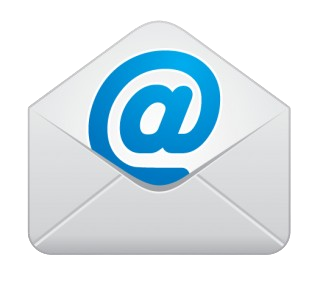Determination of Iodine Content of Different Brands of Edible Iodized Salts Available in Kabul City, Afghanistan
DOI:
https://doi.org/10.62810/jnsr.v2i2.60Keywords:
Iodine, Iodine deficiency, Iodized salt, Iodine deficiency disorderAbstract
Salt is an excellent carrier of iodine since it is consumed by all community members at approximately consistent, well-defined levels, regardless of socio-economic condition. Iodine is an essential micronutrient of thyroid glands for average growth and mental development. Iodine deficiency is a common problem in some parts, especially in mountainous fields of Afghanistan, and causes specific diseases. One of the essential ways to prevent Iodine deficiency disease is to fortify edible salt with iodine. This research aims to find out how much iodine was in various brands of edible table salts sold at the retailer level in various Kabul shopping centers. This cross-sectional research was performed from 15 July to 15 August 2023. The iodometric titration method determined Iodine in salt samples—23 different brands. We have found 39% of selected samples that are not standard in amount of iodine content. Also, marked samples were found to be 17% without iodine, and 43% had a sufficient amount of iodine. Determination of iodine content in salt samples showed that more than 50% of the powdered samples don’t have adequate iodine content (15 ppm and above). That means advice on powdered salt use does not ensure the proper iodine intake.
Downloads
References
Fan, L., Du, Y., Meng, F., Liu, L., Li, M., Liu, P., & Sun, D. (2022). How to Decide the Iodine Content in Salt for a Country—China as an Example. Nutrients, 14(21), 4606. https://doi.org/10.3390/nu14214606 DOI: https://doi.org/10.3390/nu14214606
Fallah, S. H., Khalilpour, A., Amouei, A., Rezapour, M., & Tabarinia, H. (2020). Stability of Iodine in Iodized Salt Against Heat, Light and Humidity. International Journal of Health and Life Sciences, 6(1), 1–6.https: doi: 10.5812/ijhls.100098 DOI: https://doi.org/10.5812/ijhls.100098
Gowda, T.T.,& R. (2022). determination of iodine in iodized salt. 5(5),36-38 https://irjpms.com/wp-content/uploads/2022/08/IRJPMS-V5N5P95Y22.pdf 36–38.
Halligudi, N., Bhupathyraaj, M.*, Al-Ghazali M. (2022). DETERMINATION OF IODINE CONTENTS FROM THE DIFFERENT BRANDS OF EDIBLE IODIZED SALTS AVAILABLE IN MUSCAT , OMAN. 13(7), 3628–3637.https:// doi: 10.47750/pnr.2022.13.S07.463
Jalili, M., Ebrahimi, A. A., Ehrampoush, M. H., Abbasi, F., Eslami, H., Fallahzadeh, R. A., Shirdeli, M., & Molavi, F. (2018). Evaluation of Iodine in Distributed Salts in Abarkouh City in 2017-2018. Journal of Environmental Health and Sustainable Development, 3(4), 659–665. https://doi: 10.18502/jehsd.v3i4.227 DOI: https://doi.org/10.18502/jehsd.v3i4.227
Jooste, P. L. (2003). Assessment of the iodine concentration in table salt at the production stage in South Africa. Bulletin of the World Health Organization, 81(7), 517-521. https://www.ncbi.nlm.nih.gov/pmc/articles/PMC2572506/pdf/12973644.pdf
Korobitsyna, R., Aksenov, A., Sorokina, T., Trofimova, A., Sobolev, N., Grjibovski, A. M., Chashchin, V., & Thomassen, Y. (2020). Iodine status of women and infants in russia: A systematic review. International Journal of Environmental Research and Public Health, 17(22), 1–15.https:// doi: 10.3390/ijerph17228346 DOI: https://doi.org/10.3390/ijerph17228346
Koyuncu, K., Turgay, B., & Söylemez, F. (2019). Iodine deficiency in pregnant women at first trimester in Ankara. Journal of the Turkish-German Gynecological Association, 20(1), 37–40.https:// doi: 10.4274/jtgga.galenos.2018.2017.0150 DOI: https://doi.org/10.4274/jtgga.galenos.2018.2017.0150
Kumar , B. G. (2013). Household Salt Iodine Content Estimation with the Use of Rapid Test Kits and Iodometric Titration Methods. June 2014, 3–7. https://doi: 10.7860/JCDR/2013/5477.2969
Lieberman A.H.M, tadesse, S., Hymete, A., M., Gebreyesus, S. H., & Ashenef, A. (2022). Iodine status, household salt iodine content, knowledge and practice assessment among pregnant women in Butajira, South Central Ethiopia. Plos one, 17(11), e0277208. https://doi.org/10.1371/journal.pone.027720 DOI: https://doi.org/10.1371/journal.pone.0277208
Mégier, C., Dumery, G., & Luton, D. (2023). Iodine and thyroid maternal and fetal metabolism during pregnancy. Metabolites, 13(5), 633. https://doi.org/10.3390/metabo13050633 DOI: https://doi.org/10.3390/metabo13050633
Milevska-Kostova, N., Miladinova, D., Kuzmanovska, S., Majstorov, V., Ittermann, T., & Völzke, H. (2022). Universal salt iodization potentially contributes to health equity: Socio-economic status of children does not affect iodine status. In Journal of Pediatric Endocrinology and Metabolism 35(9) 1154–1160. https://doi: 10.1515/jpem-2022-0166 DOI: https://doi.org/10.1515/jpem-2022-0166
Petry, N., Jallow, B., Sawo, Y., Darboe, M. K., Barrow, S., Sarr, A., & Wirth, J. P. (2019). Micronutrient deficiencies, nutritional status and the determinants of anemia in children 0–59 months of age and non-pregnant women of reproductive age in the Gambia. Nutrients, 11(10), 2275. https://doi.org/10.3390/nu11102275 DOI: https://doi.org/10.3390/nu11102275
Poyesh, N., Hassrat, H., Mohammadi, A. A., Thorson, J. E., Mirzaei, Z., & Ahmadi, F. (2015). Child Notice Afghanistan. 1–106. Retrieved from https://www.unicef.org/afghanistan/sites/unicef.org.afghanistan/files/2018-02/afg-report-childnotice2015.pdf
Prakash, R. (2005). High thyroid volume in children with excess dietary iodine intakes [3]. American Journal of Clinical Nutrition, 82(3), 708–709.https:// doi: 10.1093/ajcn.82.3.708 DOI: https://doi.org/10.1093/ajcn.82.3.708
Szybiński, Z. (2012). Work of the Polish Council for Control of Iodine Deficiency Disorders, and the model of iodine prophylaxis in Poland. Endokrynologia Polska, 63(2), 156–160. https://pubmed.ncbi.nlm.nih.gov/22538756/#:
Untoro, J., Mangasaryan, N., De Benoist, B., & Darnton-Hill, I. (2007). Reaching optimal iodine nutrition in pregnant and lactating women and young children: Programmatic recommendations. Public Health Nutrition, 10(12 A), 1527–1529. doi: 10.1017/S1368980007705360 https://doi.org/10.3390/nu11102275 DOI: https://doi.org/10.1017/S1368980007705360
Verhagen, N. J. E., Gowachirapant, S., Winichagoon, P., Andersson, M., Melse-Boonstra, A., & Zimmermann, M. B. (2020). Iodine Supplementation in Mildly Iodine-Deficient Pregnant Women Does Not Improve Maternal Thyroid Function or Child Development: A Secondary Analysis of a Randomized Controlled Trial. Frontiers in Endocrinology, 11. https://doi: 10.3389/fendo.2020.572984 DOI: https://doi.org/10.3389/fendo.2020.572984
Vithanage M. (2016). Iodine in commercial edible iodized salts and assessment of iodine exposure in Sri Lanka. Archives of Public Health, 1–7.https:// doi: 10.1186/s13690-016-0133-0 DOI: https://doi.org/10.1186/s13690-016-0133-0
Voltaire. (2021). Iodine intake and uptake in populations at risk for iodine deficiency. Retrieved from https://gupea.ub.gu.se/handle/2077/67337
WHO. (2021). Reducing public health risks associated with the sale of live wild animals of mammalian species in traditional food markets. Interim Guidance, April, 1–8. Retrieved from https://www.who.int/publications/i/item/WHO-2019-nCoV-Food-safety-traditional-markets-2021.1
Wisnu, C. (2008). Determination of iodine species content in iodized salt and foodstuff during cooking. International Food Research Journal, 15(3), 325–330 https://ifrj.upm.edu.my/15%20(3)%202008/10.%20Wisnu%20C.pdf
Zahidi, A., Zahidi, M., & Taoufik, J. (2016). Assessment of iodine concentration in dietary salt at household level in Morocco. BMC Public Health, 16, 1-6. https://doi.org/10.1186/s12889-016-3108-8 DOI: https://doi.org/10.1186/s12889-016-3108-8
Downloads
Published
How to Cite
Issue
Section
License
Copyright (c) 2024 Bashir Ahmad Bashir, Gull Nazir Nazimi, Noorullah Mandizi

This work is licensed under a Creative Commons Attribution-NonCommercial 4.0 International License.












